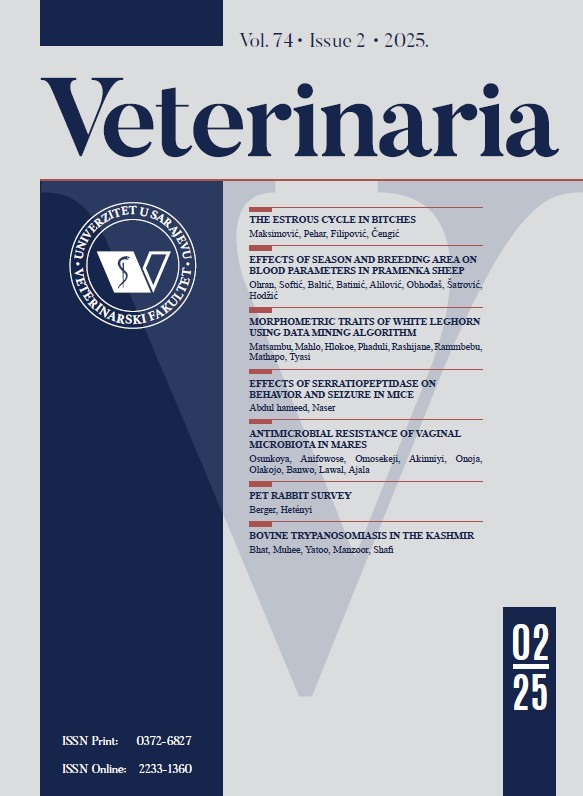Detection of pregnancy toxemia by monitoring betahydroxybutyric acid in Algerian goats
Keywords:
Small ruminants, ketone bodies, late pregnancy, litter sizeAbstract
The aim of this study was to follow the evolution of betahydroxybutyric acid (BHBA) in blood and find out if it is possible to detect the toxemic goats early before the occurrence of clinical symptoms. The study was performed on 91 local Arbya goats during the last six weeks of gestation. The measurement was made using a “Precision xtra blood ketone test” portable device. Blood collection and BHBA measurement were done on the farm in the morning, before the goats were left for grazing. The results obtained in this experiment show us that it is possible to detect goats who are likely to develop pregnancy toxemia from the level of BHBA measured during the last six weeks of gestation. The 4th week before kidding was chosen as the most opportune time to detect goats at risk of pregnancy toxemia, taking into account changes in BHBA levels.
Threshold values were established at the 4th prepartum week for pregnancy toxemia that ranged from 0.34 to 0.65 mmol/l with an accuracy of 66.7 %. Litter size was associated with pregnancy toxemia, and the thresholds of BHBA have been established for goats with a single and the multiple kids.
The threshold for goats with the multiple kids ranges from 0.40 to 0.65 mmol/l with an accuracy of 94%, and for goats with a single kid in litter ranges from 0.34 to 0.53 mmol/l with an accuracy of 40%. This method allowed us to establish the threshold values for BHBA to detect goats that are susceptible and at high risk of developing pregnancy toxemia in the weeks leading up to kidding, before the occurrence of the specific clinical or subclinical symptoms of pregnancy toxemia.
Downloads
Published
How to Cite
Issue
Section
License
Copyright (c) 2020 VETERINARIA

This work is licensed under a Creative Commons Attribution 4.0 International License.








